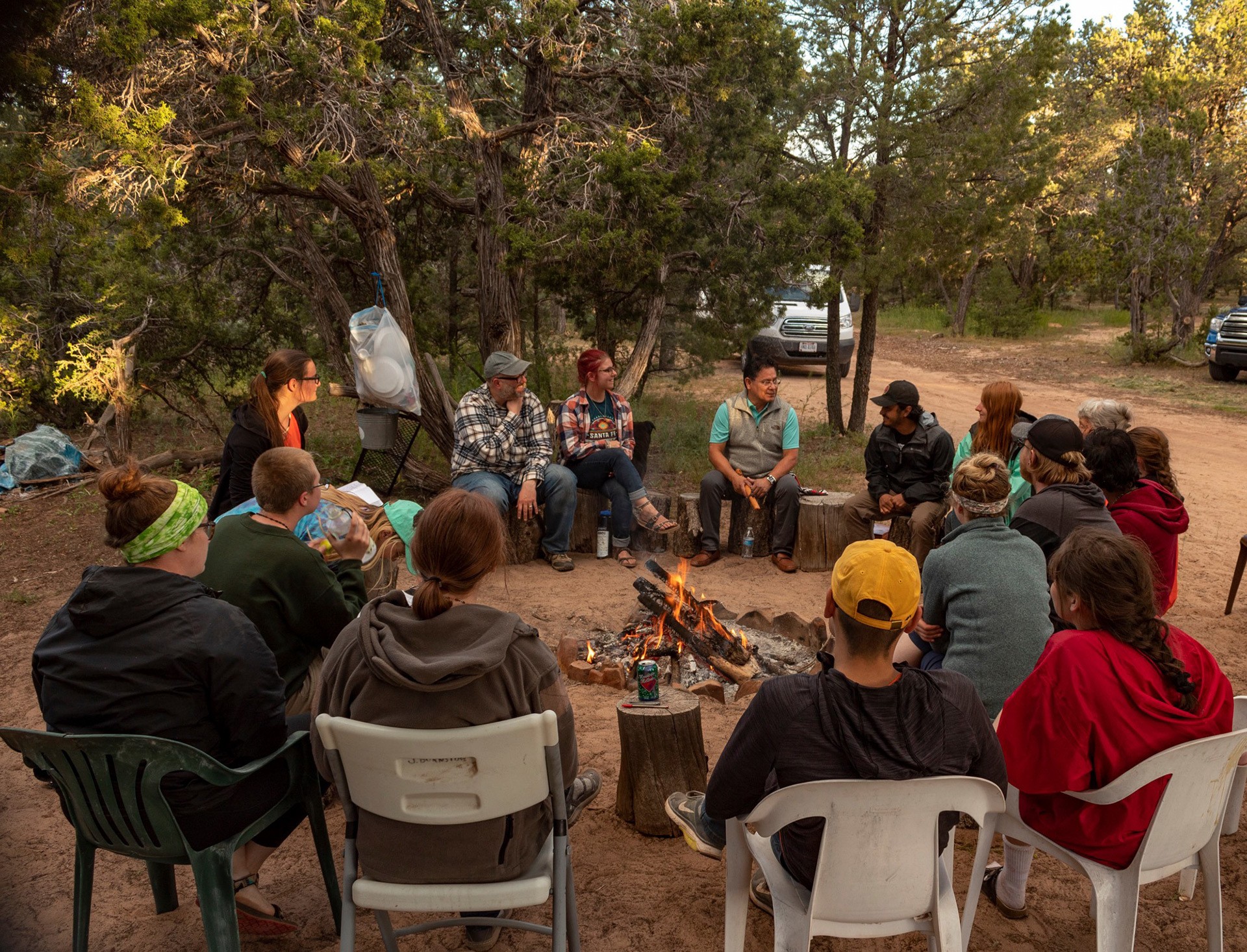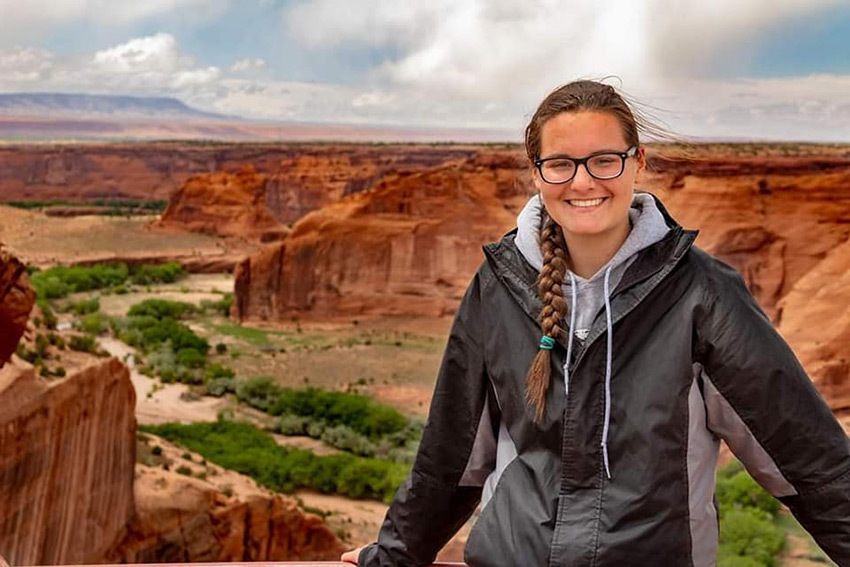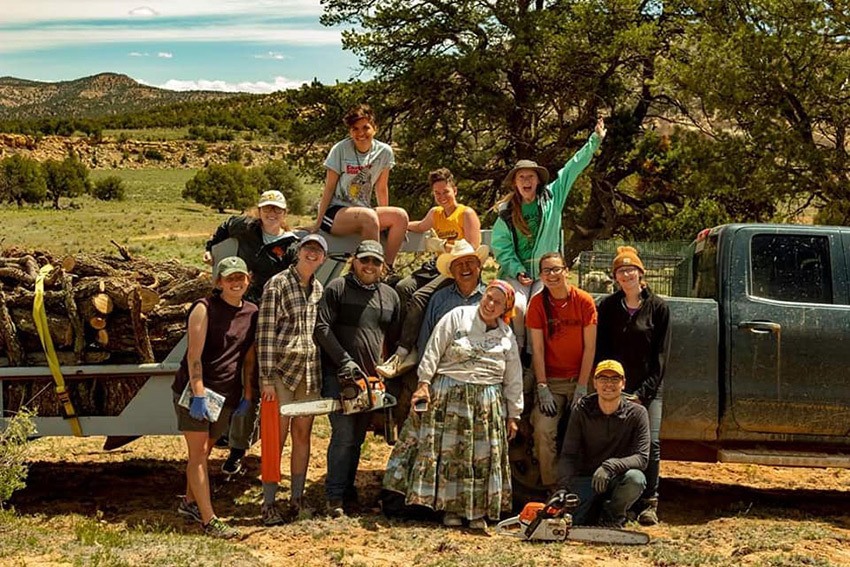

Summer Experience: Jessie Walton travels to another nation – and to herself

By Kandace York
Jessie Walton remembers the moment she stepped out of a van and into Santa Fe, New Mexico, this summer. It was the start of the Navajo Nation trip; for her and many other students, it would be a life-changing two weeks.
“It was very early morning,” the graphic design major from Orrville, Ohio, said. “The sun was just starting to rise and there was a light, eerie fog around us. It felt like we had entered a whole different world.”
In a way, they had.
The Navajo Nation trip took them through parts of New Mexico and Arizona, with a focus on Indian reservations. They met Navajo elders and participated in service projects to learn about art, culture, nature and history of the Navajo Nation.
Walton said she is 50 percent Cherokee of the Long Hair tribe, and she had initial concerns about the trip.

“I wasn’t sure what the Navajo would think of us: both as white people and, for me, someone from another tribe,” she said.
She shouldn’t have worried, she said. “People were so caring and friendly. They welcomed us and allowed us into their lives.”
The Navajo Nation, Walton said, centers around three beliefs. First, you need to respect nature; if you do, nature will respect you back. Second, “we’re all five-finger people,” meaning that everyone is the same. And third, you should be kind to all people regardless of ethnicity, race or other demographics. “Everyone has a story and everyone carries a burden.”
The trip was even more memorable because of the bonding within the BGSU group. “I went not knowing anyone except Professor Ricketts, who had been my prof for one class. But all the people on the trip –- people I didn’t know –- are now my friends. All of them.”
This immersive experience is just what trip organizers Gordon Ricketts and Dr. Chris Frey envisioned.
Frey, an associate professor in the College of Education and Human Development, said, “We want to take students to a part of the country and to a culture that many haven’t experienced. We want them to feel what diversity and inclusion mean, where they live on other people’s terms.”
As co-manager of the trip, Frey described one of the conversations that the living conditions inspire. “In many places we visit, people do not have, and sometimes do not want running water or electricity. So, we talked about how people use water and what happens where they don’t have electricity.
“That’s something that many of the people on this trip haven’t experienced, but many Navajo have lived like this for hundreds of years.”
Although the trip is structured, Frey said the itinerary is flexible.
“We cook all our own food, so in the morning one group makes breakfast. Then we might visit historical sites, take hikes or participate in service projects, like butchering a sheep for supper. We keep some free time in the schedule to let students reflect on their experiences.”
Although the Navajo Nation lies geographically within the United States, Frey said, “It’s a different culture, a different economy and a different language.”
His goals include expanded opportunities to work with more indigenous cultures throughout the U.S. and the world.
“There are 400 million indigenous people worldwide – not just Navajo,” he said.
Walton echoed his point.
“Native Americans are still here, working and living every day," she said. "They have not gone away.”
Walton said she already plans to return to the Navajo Nation as part of BGSU's next trip: May 17-31.
Updated: 10/25/2019 12:57PM
